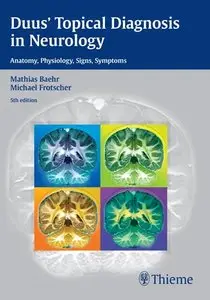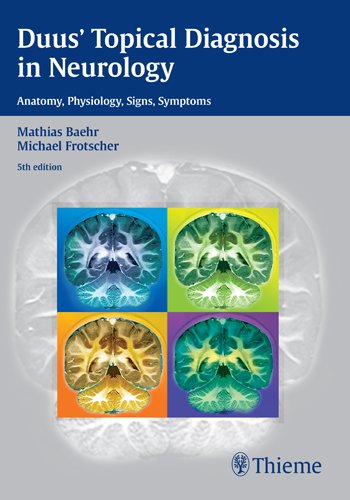Duus' Topical Diagnosis in Neurology: Anatomy, Physiology, Signs, Symptoms, 5th edition by Mathias Baehr and Michael Frotscher
English | 2012 | ISBN: 3136128052 | ISBN-13: 9783136128053 | 344 pages | PDF | 230 MB
English | 2012 | ISBN: 3136128052 | ISBN-13: 9783136128053 | 344 pages | PDF | 230 MB
The fifth edition of Duus' classic title Topical Diagnosis in Neurology continues to provide a clear, integrated presentation of anatomy, function, and disorders of the central nervous system and serves as a quick reference for practitioners and trainees alike.
It elucidates the neuroanatomical pathways that lead to specific clinical syndromes and demonstrates how solid anatomical knowledge combined with a thorough neurological examination can help localize a lesion and arrive at a diagnosis.
Features of the Fifth Edition:
• A modern, integrated, and interdisciplinary approach to topical neurologic diagnosis, showing how knowledge of basic neuroanatomy and neurophysiology can be applied in the clinical setting
• An enlarged page design that showcases more than 400 detailed anatomic illustrations including CT and MRI images of the highest quality
• A logical, thematic structure, with useful summaries at the beginning of each chapter and color-coded section headings that enable readers to distinguish between neuroanatomical and clinical material at-a-glance
• A collection of updated case studies, state-of-the-art imaging examples, and a new introduction to the principle components of the nervous system
• A wide range of study aids and clinical correlations that support the emphasis on integrative medicine in the current medical school curriculum<
Topical Diagnosis in Neurology, Fifth Edition is an ideal reference for neurologists and neuroscientists who correlate neurologic diseases to anatomic location to complete a diagnosis or understand a clinical syndrome. It is also an essential tool for trainees and advanced students who need a solid grounding in key neurofunctional relationships.



